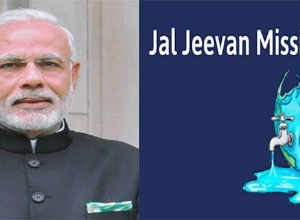
On the occasion of Good Governance Day i.e. on December 25, 2019, Indian Prime Minister, Narendra Modi has released the Operational Guidelines for th implementation of Jal Jeevan Mission (JJM), during an event organized at Vigyan Bhawan, New Delhi. Key Points: Need for JJM: Out of 17.87 Crore Indian rural households, there are 14.6 Crore households who do not have household water tap connection facility. They account 81.67%. Project Financing: On financing front, Centre will provide Rs.2.08 lakh Crore while the fund sharing pattern to be 90:10 for Himalayan and North-Eastern States; 50:50 for other States and 100% for UTs. Institutional arrangement proposed for JJM Implementation: National Jal Jeevan Mission at the Central level State Water and Sanitation Mission (SWSM) at State level District Water and Sanitation Mission (DWSM) at district level Gram Panchayat and/ or its sub-committees i.e. Village Water Sanitation Committee (VWSC)/ Paani Samiti at village Level : Village Water Sanitation Committee (VWSC)/ Paani Samiti at village Level – It has been proposed to imbibe the spirit of 73rd Amendment of Constitution of India which states that Gram Panchayats or its sub-committees play a crucial role in planning, designing, execution, operations and maintenance of the in-village infrastructure. About JJM: Approved on 13.08.2019, the `60 lakh Crore Jal Jeevan Mission (JJM) aims to provide Functional Household Tap Connection (FHTC) i.e. Har Ghar Nal Se Jal (HGNSJ) to every rural household by 2024 with service level at the rate of 55 litres per capita per day (lpcd). The National Rural Drinking Water Programme (NRDWP) subsumed into Jal Jeevan Mission (JJM) by Government.

